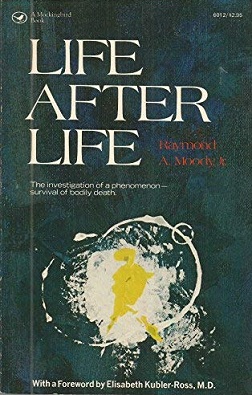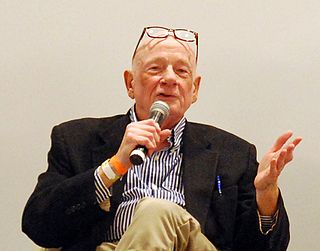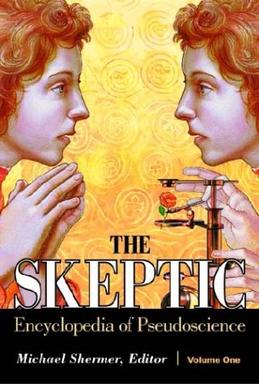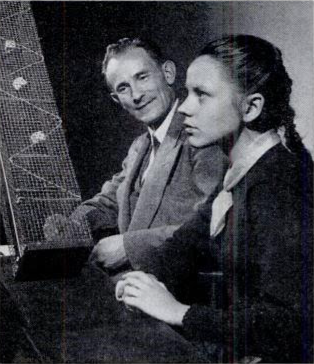
Parapsychology is the study of alleged psychic phenomena and other paranormal claims, for example, those related to near-death experiences, synchronicity, apparitional experiences, etc. Criticized as being a pseudoscience, the majority of mainstream scientists reject it. Parapsychology has also been criticised by mainstream critics for claims by many of its practitioners that their studies are plausible despite a lack of convincing evidence after more than a century of research for the existence of any psychic phenomena.

Life After Life is a 1975 book written by psychiatrist Raymond Moody. It is a report on a qualitative study in which Moody interviewed 150 people who had undergone near-death experiences (NDEs). The book presents the author's composite account of what it is like to die, supplemented with individual accounts. On the basis of his collection of cases, Moody identified a common set of elements in NDEs:

An out-of-body experience is a phenomenon in which a person perceives the world from a location outside their physical body. An OBE is a form of autoscopy, although this term is more commonly used to refer to the pathological condition of seeing a second self, or doppelgänger.

Susan Jane Blackmore is a British writer, lecturer, sceptic, broadcaster, and a visiting professor at the University of Plymouth. Her fields of research include memetics, parapsychology, consciousness, and she is best known for her book The Meme Machine. She has written or contributed to over 40 books and 60 scholarly articles and is a contributor to The Guardian newspaper.

Astral projection is a term used in esotericism to describe an intentional out-of-body experience (OBE) that assumes the existence of a subtle body, known as the astral body or body of light, through which consciousness can function separately from the physical body and travel throughout the astral plane.

Stanislav "Stan" Grof is a Czech-born psychiatrist who has been living in the United States since the 1960s. Grof is one of the principal developers of transpersonal psychology and research into the use of non-ordinary states of consciousness for purposes of psychological healing, deep self-exploration, and obtaining growth and insights into the human psyche. In 1993, Grof received an Honorary Award from the Association for Transpersonal Psychology (ATP) for major contributions to and development of the field of transpersonal psychology, given at the occasion of the 25th Anniversary Convocation held in Asilomar, California. He also received the VISION 97 award granted by the Foundation of Dagmar and Václav Havel in Prague on October 5, 2007. In 2010, he received the Thomas R. Verny Award from the Association for Pre- and Perinatal Psychology and Health (APPPAH). On the other hand, Grof has been criticized by the skeptic group Český klub skeptiků Sisyfos in the Czech Republic for furthering what they view as nonscientific psychology too far outside the bounds of the materialistic philosophical underpinnings of modern science. He is the only person to have been awarded the anti-prize Erratic Boulder Award twice in that country. Grof was married to psychologist Brigitte Grof in 2014.

Raymond A. Moody Jr. is an American philosopher, psychiatrist, physician and author, most widely known for his books about afterlife and near-death experiences (NDE), a term that he coined in 1975 in his best-selling book Life After Life. His research explores personal accounts of subjective phenomena encountered in near-death experiences, particularly those of people who have apparently died but been resuscitated. He has widely published his views on what he terms near-death-experience psychology.
Near-death studies is a field of psychology and psychiatry that studies the physiology, phenomenology and after-effects of the near-death experience (NDE). The field was originally associated with a distinct group of North American researchers that followed up on the initial work of Raymond Moody, and who later established the International Association for Near-Death Studies (IANDS) and the Journal of Near-Death Studies. Since then the field has expanded, and now includes contributions from a wide range of researchers and commentators worldwide. Research on near-death experiences is mainly limited to the disciplines of medicine, psychology and psychiatry.

A near-birth experience is an alleged recollected event which occurred before or during one's own birth, or during the pregnancy, an alleged remembering of one's own pre-existence, or an alleged encounter with the unborn child experienced by relatives or close family friends. Under this usage, the term "near-birth experience" is analogous to the term "near-death experience."
The International Association for Near-Death Studies (IANDS) is a nonprofit organization based in Durham, North Carolina in the United States, associated with near-death studies. The Association was founded in the US in 1981, in order to study and provide information on the phenomena of the near death experience (NDE). Today it has grown into an international organization, which includes a network of more than 50 local interest groups, and approximately 1,200 members worldwide. Local chapters, and support groups, are established in major U.S cities. IANDS also supports and assists near-death experiencers (NDErs) and people close to them. In one of its publications the organization has formulated its vision as one of building "global understanding of near-death and near-death-like experiences through research, education, and support".

The Skeptic Encyclopedia of Pseudoscience is a two-volume collection of articles that discuss the Skeptics Society's scientific findings of investigations into pseudoscientific and supernatural claims. The editor, Michael Shermer, director of the Skeptics Society, has compiled articles originally published in Skeptic magazine with some conceptual overviews and historical documents to create this encyclopedia. It was published by ABC-CLIO in 2002.
Pam Reynolds Lowery, from Atlanta, Georgia, was an American singer-songwriter. In 1991, at the age of 35, she stated that she had a near-death experience (NDE) during a brain operation performed by Robert F. Spetzler at the Barrow Neurological Institute in Phoenix, Arizona. Reynolds was under close medical monitoring during the entire operation. During part of the operation she had no brain-wave activity and no blood flowing in her brain, which rendered her clinically dead. She claimed to have made several observations during the procedure which medical personnel reported to be accurate.
A near-death experience (NDE) is a profound personal experience associated with death or impending death which researchers describe as having similar characteristics. When positive, which the great majority are, such experiences may encompass a variety of sensations including detachment from the body, feelings of levitation, total serenity, security, warmth, joy, the experience of absolute dissolution, review of major life events, the presence of a light, and seeing dead relatives. When negative, such experiences may include sensations of anguish, distress, a void, devastation, vast emptiness, seeing hellish places and "the devil."

Pim van Lommel is a Dutch author and researcher in the field of near-death studies.
Peter Brooke Cadogan Fenwick is a neuropsychiatrist and neurophysiologist who is known for his studies of epilepsy and end-of-life phenomena.
Sam Parnia is a British associate professor of Medicine at the NYU Langone Medical Center where he is also director of research into cardiopulmonary resuscitation. In the United Kingdom, he is director of the Human Consciousness Project at the University of Southampton. Parnia is known for his work on near-death experiences and cardiopulmonary resuscitation.

Consciousness after death is a common theme in society and culture, and the belief in some form of life after death is a feature of many religions. However, scientific research has established that the physiological functioning of the brain, the cessation of which defines brain death, is closely connected to mental states.

Melvin L. Morse is an American medical doctor who specializes in pediatrics. He has authored several books and articles on paranormal science and near-death experiences in children, including the 1987 New York Times bestseller Closer to the Light, written jointly with Paul Perry, and with a foreword written by Raymond Moody. Morse has authored many journal articles, and has given media interviews on the subject of near death experiences.

Karlis Osis was a Latvian-born parapsychologist who specialised in exploring deathbed phenomena and life after death.
Jeffrey Long is an American author and researcher into the phenomenon of near-death experiences (NDEs). A physician by training, Long practices radiation oncology at a hospital in Louisiana. Long is the author of Evidence of the Afterlife: The Science of Near-Death Experiences, which appeared on The New York Times Best Seller list. In 1998, he founded the Near Death Experience Research Foundation, which is concerned with documenting and researching NDEs.












